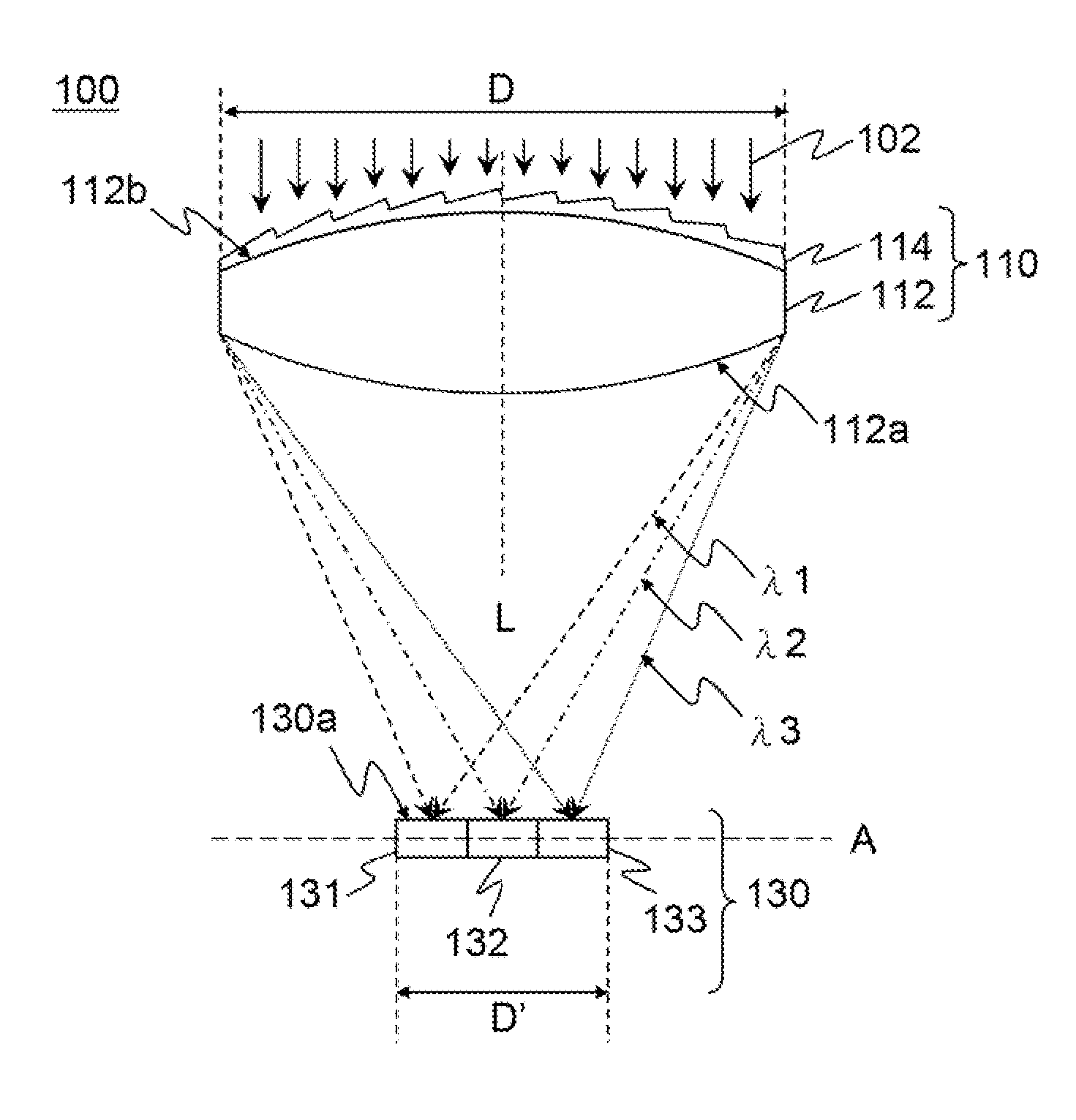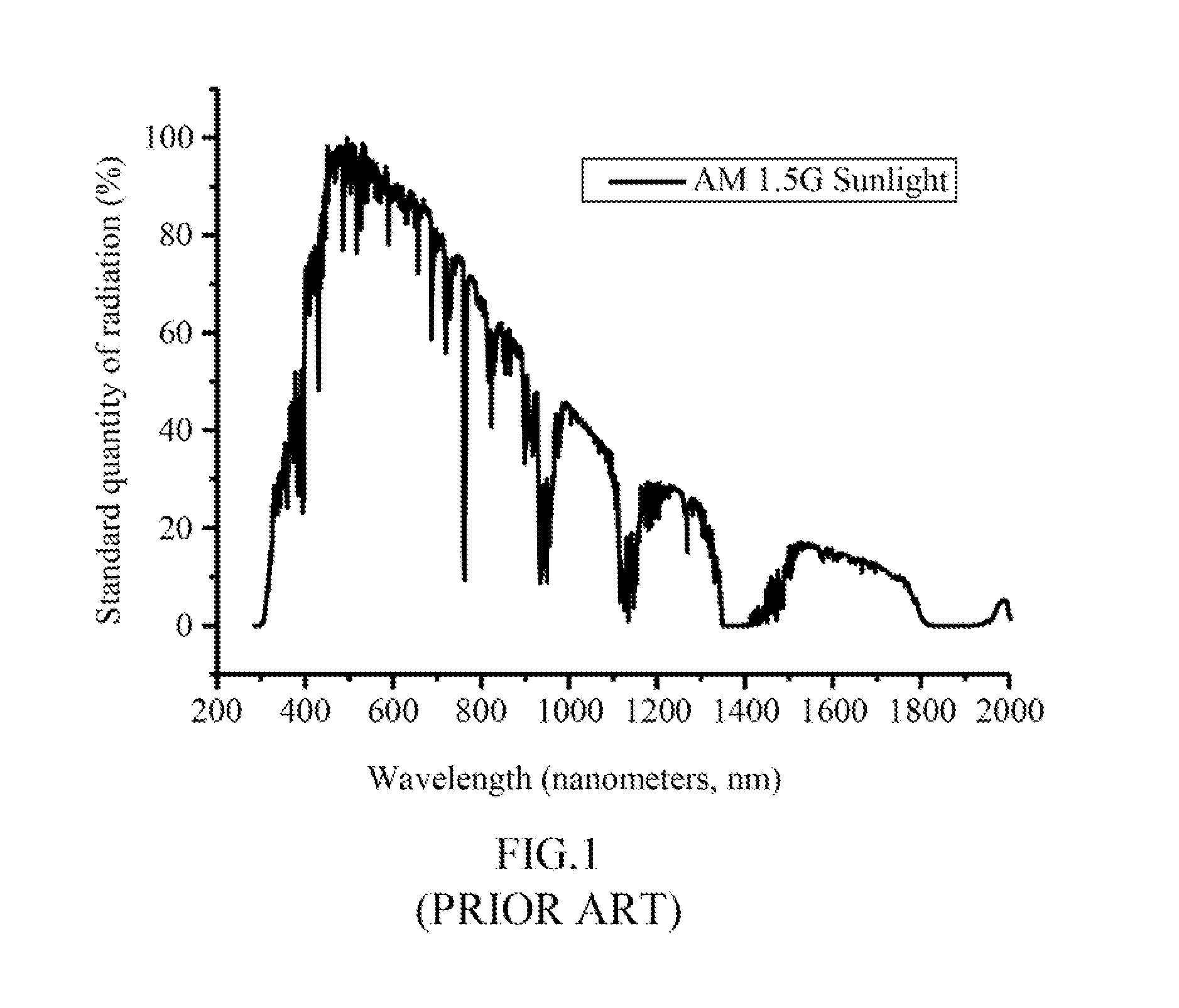Multi-band light collection and energy conversion module
a technology of energy conversion module and light collection, which is applied in the direction of photovoltaics, electrical devices, semiconductor devices, etc., can solve the problems of ineffective sunlight absorption, increased cost and complexity of production, and no absorption spectrum which can fit the solar irradiance spectrum
- Summary
- Abstract
- Description
- Claims
- Application Information
AI Technical Summary
Benefits of technology
Problems solved by technology
Method used
Image
Examples
second embodiment
[0040]Referring to FIG. 4, which is a schematic structural view of a multi-band light collection and energy conversion module according to a The difference between this embodiment and the embodiment of FIG. 3 is that a light concentration component 112 in this embodiment is a plano-convex lens. Similarly, when sunlight 102 enters a multi-band light collection and energy conversion module 100, the sunlight 102 first passes through a multi-band solar concentrator 110, and forms multiple light beams having different bands after the sunlight 102 is split and concentrated by the multi-band solar concentrator 110. At last, the light beams are incident on an energy conversion device 130.
third embodiment
[0041]Referring to FIG. 5, which is a schematic structural view of a multi-band light collection and energy conversion module according to a The difference between this embodiment and the embodiments of FIGS. 3 and 4 is that a light concentration component 112 used in this embodiment is a Fresnel lens. In this embodiment, the Fresnel lens is a two-dimensional light concentration Fresnel lens. Furthermore, in other embodiments, the Fresnel lens may also be a one-dimensional light concentration type. Similarly, when sunlight 102 enters a multi-band light collection and energy conversion module 100, the sunlight 102 passes through a multi-band solar concentrator 110, and forms multiple light beams having different bands after the sunlight 102 is split and then concentrated by the multi-band solar concentrator 110. At last, the light beams are incident on an energy conversion device 130.
fourth embodiment
[0042]Referring to FIG. 6, which is a schematic structural view of a multi-band light collection and energy conversion module according to a The difference between this embodiment and the embodiment FIG. 3 is that an optic grating 114 is disposed on a light-emitting surface 112a of a light concentration component 112 in this embodiment. Therefore, when sunlight 102 enters a multi-band solar concentrator 110, the sunlight 102 is incident on the light concentration component 112 through an incident surface 112b. After the sunlight 102 is concentrated by the light concentration component 112, the sunlight 102 exits from a light-emitting surface 112a and enters the optic grating 114. Next, the optic grating 114 splits the concentrated sunlight 102 into three light beams having different wavelengths. The light beams are concentrated to different primary spots separated from each other according to different wavelengths (λ1, λ2 and λ3) on a light concentration surface A, and are received...
PUM
 Login to View More
Login to View More Abstract
Description
Claims
Application Information
 Login to View More
Login to View More - R&D
- Intellectual Property
- Life Sciences
- Materials
- Tech Scout
- Unparalleled Data Quality
- Higher Quality Content
- 60% Fewer Hallucinations
Browse by: Latest US Patents, China's latest patents, Technical Efficacy Thesaurus, Application Domain, Technology Topic, Popular Technical Reports.
© 2025 PatSnap. All rights reserved.Legal|Privacy policy|Modern Slavery Act Transparency Statement|Sitemap|About US| Contact US: help@patsnap.com



